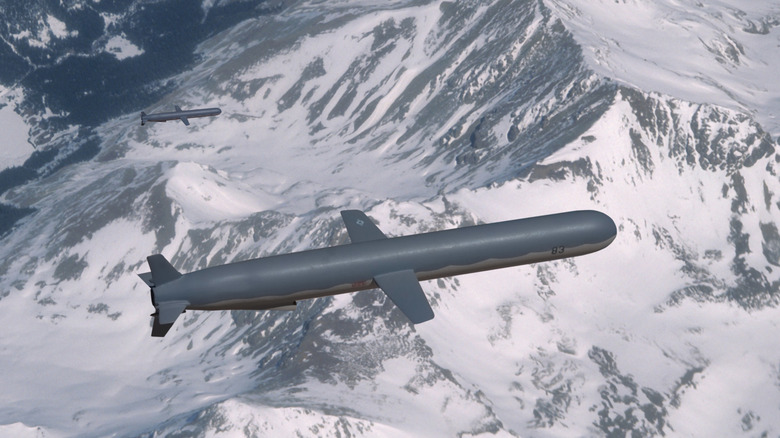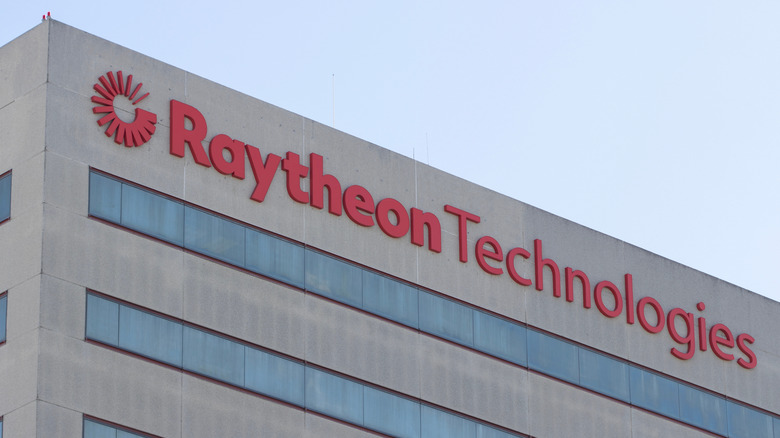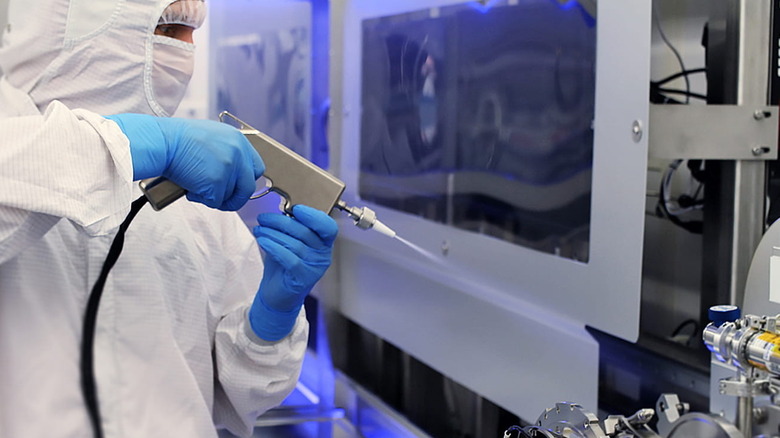Who Makes Tomahawk Missiles And Where Are They Built?
If you are somewhat familiar with U.S. Military operations, you've most likely heard of a Tomahawk before. Not the axe or the steak, but the cruise missile that gave battleships a second life. Sleek, low-flying, and scarily powerful, the Tomahawk cruise missile has become a staple in the U.S. Navy's long-range strike arsenal since the 1980s. It's launched from ships and submarines, can fly more than 1,000 miles at subsonic speeds, and hit targets with uncanny precision. But what most people have probably never thought about is who the creators are behind this iconic name and where it's actually made.
The name behind the legendary weapon is Raytheon, the longtime defense contractor that now operates under the RTX umbrella. The company has been building Tomahawk cruise missiles for over 40 years, constantly developing and enhancing the design to keep it at the top of the food chain. Their official product page outlines how modern Tomahawk variants include advanced features like in-flight retargeting and network-enabled navigation, making a missile that first flew during the Cold War feel noticeably relevant today.
Of course, making something this complex requires more than just a name on the blueprints. The real action happens out in the Arizona desert, inside one of Raytheon's most advanced production facilities.
Raytheon and RTX: The Tomahawk Masterminds
To understand how a weapon like the Tomahawk exists, you have to look at the company behind it. Raytheon is a big player in defense manufacturing, but it's just one part of something even bigger. Raytheon and United Technologies merged in 2020 to form RTX Corporation, which is now one of the biggest aerospace and defense companies in the world. Raytheon makes weapons and defense systems, Pratt & Whitney make jet engines, and Collins Aerospace makes avionics and aircraft systems. These are the three main parts of the business.
Raytheon is best known for missiles, sensors, and integrated defense systems. That includes everything from the Patriot missile and AMRAAM air-to-air systems to radar suites and ground-based interceptors. Raytheon's work is a big part of the U.S. military's infrastructure, helping with combat readiness, national defense, and the development of new technologies.
Raytheon is also behind more than just hardware for the Tomahawk. They are constantly making it better through improving guidance systems, increasing its range, improving targeting, and making it work with other weapons in complicated warfare settings. Raytheon is also still a manufacturer and a strategic partner to the Pentagon, which affects how the U.S. shows its power around the world.
Tucson: The Desert Factory That Builds the Tomahawk
The place where the Tomahawk is built might surprise you. It's not on the coast, near a naval yard, or inside some secret mountain facility. It's in the Sonoran Desert, in Tucson, Arizona, where Raytheon runs one of the most advanced missile manufacturing plants in the country. The location is more strategic than it may seem at first. It's close to major testing grounds like White Sands Missile Range and it sits at the center of a growing aerospace tech corridor in the Southwest.
Inside the Tucson facility, things are as high-tech as they get. This isn't a clanging, grease-stained production line. According to both Raytheon and news outlet WWLP, the site uses clean-room conditions, robotics, and precision tooling to assemble highly complex missile systems. Some sections resemble surgical theaters more than factories. Parts move from station to station with meticulous care you'd expect from a product, like the Patriot Air Defense System, which are designed to perform under life-or-death scenarios.
The facility is responsible not just for building Tomahawks but also houses Raytheon's Space Systems Operations facility. The facility is used to develop and test defense weapons designed to operate in space. The high-tech facility is designed to accurately simulate the vacuum of space and replicate the conditions that would occur, ensuring its defense systems operate at the highest level. The Tucson factory is thus a critical link in the U.S. military supply chain, and one that continues to evolve alongside the technology it produces.


